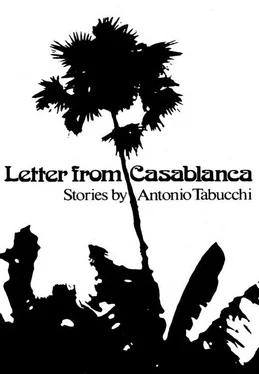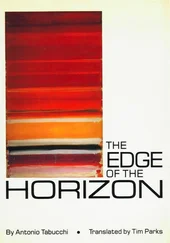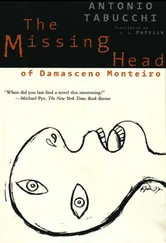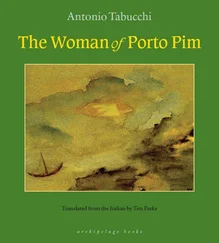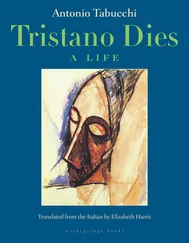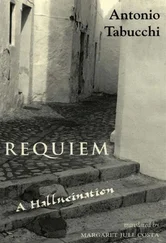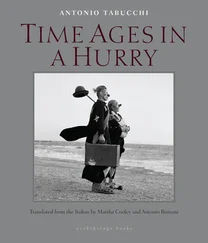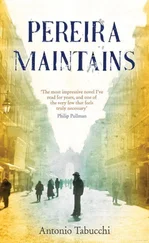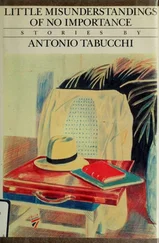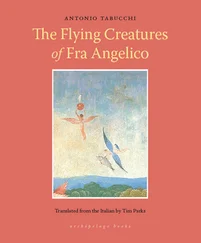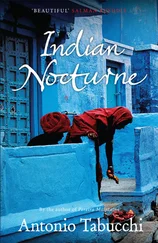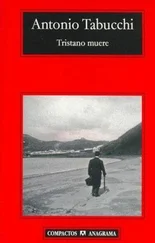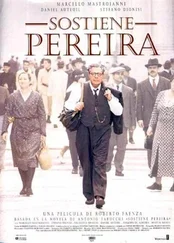Antonio Tabucchi - Letter from Casablanca
Здесь есть возможность читать онлайн «Antonio Tabucchi - Letter from Casablanca» весь текст электронной книги совершенно бесплатно (целиком полную версию без сокращений). В некоторых случаях можно слушать аудио, скачать через торрент в формате fb2 и присутствует краткое содержание. Год выпуска: 1986, Издательство: New Directions, Жанр: Современная проза, на английском языке. Описание произведения, (предисловие) а так же отзывы посетителей доступны на портале библиотеки ЛибКат.
- Название:Letter from Casablanca
- Автор:
- Издательство:New Directions
- Жанр:
- Год:1986
- ISBN:нет данных
- Рейтинг книги:4 / 5. Голосов: 1
-
Избранное:Добавить в избранное
- Отзывы:
-
Ваша оценка:
- 80
- 1
- 2
- 3
- 4
- 5
Letter from Casablanca: краткое содержание, описание и аннотация
Предлагаем к чтению аннотацию, описание, краткое содержание или предисловие (зависит от того, что написал сам автор книги «Letter from Casablanca»). Если вы не нашли необходимую информацию о книге — напишите в комментариях, мы постараемся отыскать её.
Letter from Casablanca — читать онлайн бесплатно полную книгу (весь текст) целиком
Ниже представлен текст книги, разбитый по страницам. Система сохранения места последней прочитанной страницы, позволяет с удобством читать онлайн бесплатно книгу «Letter from Casablanca», без необходимости каждый раз заново искать на чём Вы остановились. Поставьте закладку, и сможете в любой момент перейти на страницу, на которой закончили чтение.
Интервал:
Закладка:
At the beginning of November Madame entrusted to me two tasks which perfectly justified my acquisition of stationery. A catalogue had arrived from a gallery in Zurich in which two prints by Utamaro were mentioned without any specifications. I had to ask for information, dimensions, prices, possibly photographs. And then I had to go to a shop in Sanremo so that it would send us by its usual method the bulbs for transplanting indicated by such-and-such abbreviations in its catalogue.
To the gallery in Zurich I wrote a stiff, polite letter, in elegant handwriting, on my rice paper. I begged them to be very detailed in their answer, to indicate the price in Swiss francs, to send at least two colored photographs measuring 16 by 24. Finally I let drop the possibility of an immediate purchase depending upon the quality of the works, and I carefully signed myself Lisabetta Rossi-Fini, secretary to Madame Huppert. I thought that for my signature I could quite rightly begin to use Mama’s last name and Papa’s, joined by a hyphen. After all, I was the daughter of them both; I did not use names that did not belong to me.
At the shop in Sanremo, in addition to the bulbs, I ordered a dozen blue carnations which I’d seen in the catalogue and which had fascinated me. The carnation is a simple, popular flower which signifies frankness and sympathy. But that greenhouse variety of intense blue that faded into violet on its curly edges was truly unusual. They seemed exotic, mysterious flowers, something like orchids without possessing their cold vulgarity.
In those days Madame was valiantly occupied in the realization of a Gashu, a traditional moribana , for which is necessary, more than the gifts of sensitivity and creativity, exact knowledge of the ancient Japanese painting which inspired the moribana . The moribana is a type of Ikebana created in a large, flat vase, usually rectangular or round. My collaboration on the moribana , to tell the truth, was limited to the search for the primary materials, given that I had to take a rather boring walk in the hills around the lake to search for walnut trees and juniper shoots. It had rained recently and the ground was not exactly ideal for sylvan strolls. Perhaps because of the pollen and the decaying leaves, I developed an annoying irritation of the ankles which caused me to scratch for a week.
The gallery in Zurich answered by return mail. It sent the photographs of the Utamaros, regretting that the colors were not very true and that the shape was not what I had requested, but they were all that it had in its file. They showed two small water colors: one rather obvious female figure and one insect on a water lily pad, all in tones of green and brown, over which Madame enthused. The information from the gallery, in addition to the dimensions and prices, was as follows: “Utamaro, 1754–1806. Num. 148/a: Femme de Yedo , 1802 environ, gouache sur papier de Chine, etat de conservation parfait. Num. 148/b: Libellule sur nenuphar , 1790 environ, gouache sur papier de Chine, quelque legere tache d’humidite sur le dos.”
It was pure chance that evening that, before going to bed, I glanced at the chapter in Peinture japonaise dedicated to the work and school of Utamaro. The first discrepancy with the Swiss catalogue to arouse my attention was the date of death, 1797, which I confirmed in Madame’s Larousse . I found it most peculiar that such a reliable gallery could make such a foolish mistake, and I set out to search further. Decidedly the gallery was not in luck. My book devoted ample space to a follower of Utamaro, a certain Torii Kiyomine (nineteenth century), rich in talent and in mellow drawing, but without the melancholy grace of the master, who had dedicated his painting to the life of the courtesans. I understood immediately that the Swiss had made an even graver blunder, and it did not seem opportune to drop the matter.
That same evening at my desk I composed a masterpiece of a letter which the next day underwent Madame’s approval. Stating beforehand that the person for whom it was my duty to write was an international expert on Japanese painting and that the humble signer of the letter did everything possible to assist her in her research, I politely begged to observe the following: 1)I found it truly odd that Utamaro’s date of death, accepted by common consent, of the most authoritative contemporary scholars as 1797, had been arbitrarily shifted a good nine years. 2) Such an inaccuracy, which was evidently not a typographical misprint, provoked an even more lamentable error: the Maestro would have to have painted a work even though he was already deceased. 3) The female figure of No. 148/a in the catalogue, indicated as Femme de Yedo by Utamaro, was in reality a courtesan by Torii Kiyomine, as was attested (even for those unable to read the ideograms to the left of the figure) not only by the volute hem of the dress and the obviously nineteenth-century position of the figure, but the unequivocal high, black, wooden-soled sandals which emerged from beneath the kimono. I let it be understood rather wickedly that the clients of the gallery would certainly be alarmed about the guarantee of the works in their possession if they were by chance to become acquainted with such a deplorable blunder. I permitted myself to suggest, therefore, a prompt errata corrigé in the catalogue, which would reassure “all of us.” And finally I proposed the purchase, in addition to the authentic Utamaro, for which I was prepared to pay the fair price, of the courtesan by Kiyomine also, for half the requested price. I signed myself, with cordial regards, Lisabetta Rossi-Fini, secretary to Madame Huppert.
At the beginning of December, Monsieur Huppert returned from a long trip on the Ivory Coast with a precious gift for Madame. It was a stone statuette that represented a man squatting and holding a curious old-fashioned rifle. He explained that stone sculpture is extremely rare in Africa because it requires an artisan organization possible only in certain civilizations with a fairly well-developed social structure. For example, that piece came from the Mintadi people in the Upper Congo and decorated the ancient necropolis. It was a reliquary image of great antiquity, as the 1514 chronicles of Alfonso the First, King of the Congo, already attested. But the greatest value, at least for me, was the bracelet that the statue was wearing on its wrist, a very thin strip of gold with a row of tiny diamonds, simply splendid. — This, however, is a modern piece — smiled the engineer as he slipped it on Madame’s wrist. I thought it very delicate.
Monsieur Huppert was a polite man, exquisitely kind, a little shy, and looked happy that Madame had found some agreeable company “who would make her convalescence less oppressive,” as he said. Excluding the day of Monsieur Huppert’s arrival, I always had supper with the Hupperts. It was a custom begun when I had first come to the villa, and to Madame it seemed inopportune to interrupt it. Besides, I busied myself with the table, the flowers (every evening I composed a tiny Ikebana, simple and graceful), the wine. That stupid Constance had no gift of delicacy, even though she was a delight as a cook, and certainly in matters of taste one couldn’t count on her. As for Giuseppe, well, it was really a miracle to get him to work in a striped jacket and white gloves. He held the tray as if he were handling a pair of pruning shears. But you had to be indulgent with him: after all, he’d been hired as a gardener.
The conversation usually concerned Monsieur Huppert’s passion, that is, the Dark Continent, for which he nurtured a love that bordered on idolatry. His work of importing the best materials on behalf of important European firms had allowed him, in ten years of travel, to consider Africa as his chosen land. And to hear his stories, Africa still seemed the continent of Livingstone, of Stanley, and of Savorgnan di Brazza, so well did Monsieur Huppert understand its most secret heart, its most mysterious witchcraft, its less touristy itineraries. Listening to him talk I seemed to delve again into my schoolbooks or into the dreams of my childhood, into the tales of Tarzan, the adventures of Cino and Franco, the films of Ava Gardner and Humphrey Bogart. He knew all the trails off the beaten track, for instance, which safaris to choose among those which left from Fort Lamy and Fort Achambault, which seasons to avoid in order not to fall into the bedlam of rich Americans seeking thrills. He knew the best guides in Nairobi, the paleolithic dwellings of Olor-Gesalie, the rock paintings of Cheke, the mysterious ruins of Zimbabwé, which some believed were the mythical King Solomon’s Mines. But he also knew the fascination of the Victoria Falls, the luxury of the N’gor Hotel at Dakar, the picturesque cottages on the slopes of Kilimanjaro where the rich Rhodesians spent their vacations, the emerald golf courses of South Africa. During supper I remained silent listening to him tell stories. What else could I do, after all? And once in my room I took down muddled notes in a notebook that I’d entitled Voyage en Afrique . I created an ideal tourist itinerary for a trip on which I was certain sooner or later the Hupperts would invite me to accompany them. I was aware, with perfect objectivity, that my prestige was clearly in ascent. Among other things, the victory over the gallery in Zurich, which had responded congratulating me and accepting my conditions, scored an indisputable point in my favor.
Читать дальшеИнтервал:
Закладка:
Похожие книги на «Letter from Casablanca»
Представляем Вашему вниманию похожие книги на «Letter from Casablanca» списком для выбора. Мы отобрали схожую по названию и смыслу литературу в надежде предоставить читателям больше вариантов отыскать новые, интересные, ещё непрочитанные произведения.
Обсуждение, отзывы о книге «Letter from Casablanca» и просто собственные мнения читателей. Оставьте ваши комментарии, напишите, что Вы думаете о произведении, его смысле или главных героях. Укажите что конкретно понравилось, а что нет, и почему Вы так считаете.
